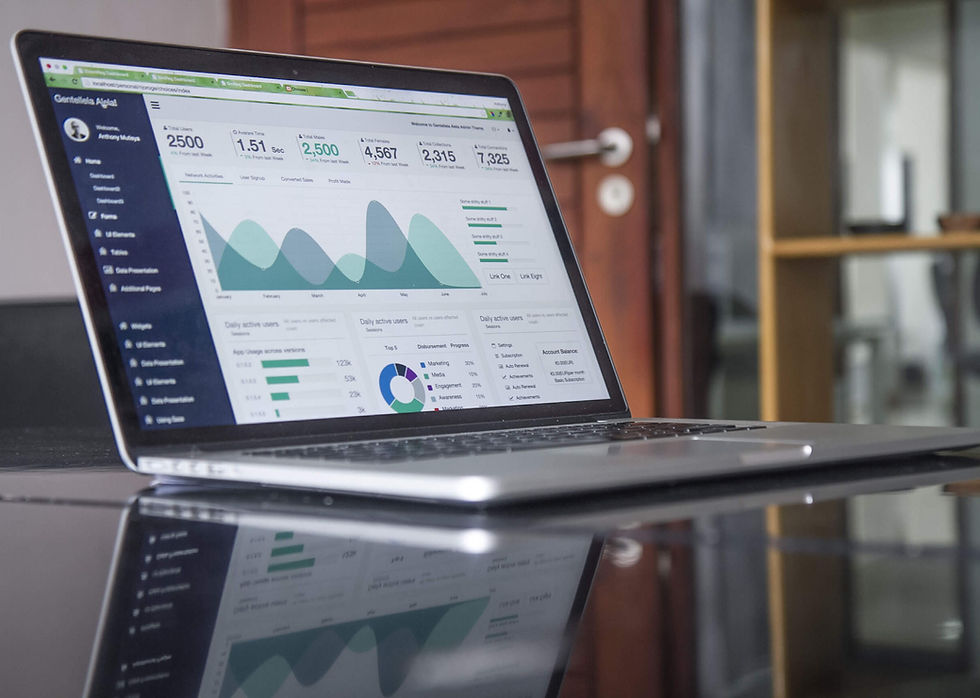Maximising Revenue Potential in e-Commerce Industry
- z c
- Jan 22, 2024
- 4 min read
I've had the privilege of closely collaborating with clients across various industries. As someone who is passionate about marketing and the digital world, I find immense value in scrutinising business metrics and optimising strategies. One of the highlights of my work involves evaluating performance and revenue during quarterly business reviews, where we delve into the main metrics.
During these quarterly reviews, it's fascinating to see the enthusiasm of marketers, particularly in the marketing and digital strategies. However, one of the recurring challenges we face is demonstrating the true value and revenue contribution of the platforms they're using. Despite investing in comprehensive suites like marketing automation and web personalisation, many brands that originated offline first still focus predominantly on email revenue during these reviews. While email revenue may yield immediate gains, it's unsuitable in the long run as customer fatigue sets in due to targeting the same audience repeatedly; and expected to have exponential returns.
Vanity metrics, such as website traffic and lead growth, are often dismissed as superficial indicators of success. However, they play a crucial role in assessing the effectiveness of marketing strategies and identifying areas for improvement. Rather than viewing them in isolation, it's essential to analyse them within the context of broader business objectives and revenue goals. I have witnessed that some of the MarTech tools show you such metrics like subscriber growth, revenue uplift, and total revenue which gives you comprehensive understanding of your overall business metrics through the tool.
To maximize the impact of lead generation and traffic, it's imperative to adopt focused tactics that align with business objectives. Increasing the top-of-funnel traffic can significantly boost revenue potential. However, it's equally crucial to optimise the activation and conversion funnel through web personalisation and optimisation strategies. Here are 3 strategies to look at:
Lead Collection Optimisation Strategy: Tailoring lead collection methods based on customer behaviour can enhance engagement and drive conversions. Imagine you're running paid ads to drive traffic to your website. Instead of treating all website visitors the same, leverage the power of lead generation to target specific segments. By implementing smart lead capture forms, you can offer first-time purchase incentives, such as exclusive discounts or freebies, to visitors arriving from paid ads when they sign up for email or SMS subscriptions. This targeted approach ensures that you're engaging with high-intent leads, maximizing the effectiveness of your marketing spend.
Product Recommendations Strategy: Leveraging customer data to recommend relevant products and services can enhance the shopping experience and increase conversions. For first-time visitors or customers unfamiliar with your brand, highlight best-selling or trending products to alleviate decision paralysis and instill confidence in their purchase. By showcasing products that align with their browsing history or preferences, you create a tailored shopping journey that resonates with their needs and preferences. For returning customers, capitalize on their familiarity with your brand by showcasing new arrivals or trending products. By tapping into the emotional aspect of discovery and exclusivity, you create a sense of excitement and anticipation, driving repeat purchases and fostering brand loyalty.
Some of the example brands - Amazon's personalised recommendation engine analyses browsing history and purchase behaviour to showcase products that align with their interests, thereby reducing decision paralysis and increasing the likelihood of conversion. Similarly, fashion brands like ASOS and Zara utilize personalized product recommendations to showcase trending items or outfit suggestions based on customer preferences, creating a tailored shopping journey that resonates with their audience.
For loyal customers, beauty brands like Sephora and Ulta Beauty excel in leveraging personalised recommendations. By curating product recommendations based on past purchases and skincare concerns, they not only drive repeat purchases but also foster a sense of trust and loyalty among their customer base.
Personalised Assistance Strategy: In today's digital age, personalised assistance through various chat platforms has become integral to enhancing the customer experience and driving conversions. Brands across different industries are leveraging chatbots and messaging apps to provide tailored support and guidance to their customers.
WhatsApp Commerce: WhatsApp, with its vast user base and messaging capabilities, has emerged as a powerful tool for brands to engage with customers and drive e-commerce sales. Many leading brands have integrated WhatsApp into their e-commerce strategy to offer personalized assistance and streamline the shopping experience. For example, Brazilian cosmetics brand Natura utilises WhatsApp to provide personalised skincare consultations and product recommendations to its customers. By leveraging WhatsApp's chat features, Natura's customers can receive real-time assistance and make informed purchasing decisions, leading to increased sales and customer satisfaction.
LINE: LINE, a popular messaging app in Asia, is also being leveraged by brands to enhance their e-commerce strategy and provide personalized assistance to customers. For instance, Japanese fashion retailer Muji has integrated LINE into its e-commerce platform to offer personalised shopping recommendations and customer support services. Through LINE's messaging capabilities, Muji customers can interact with chatbots to receive product recommendations, track orders, and resolve inquiries, creating a seamless and personalized shopping experience.
Other Chat Platforms: Apart from WhatsApp and LINE, various other chat platforms are being utilised by brands to offer personalised assistance and drive e-commerce sales. For example, luxury fashion brand Burberry has implemented live chat support on its website, allowing customers to engage with sales associates in real-time and receive personalised recommendations based on their preferences. Similarly, electronics retailer Best Buy offers personalised assistance through its chatbot on Facebook Messenger, guiding customers through the product selection process and addressing their inquiries promptly.
In today's competitive landscape, traditional metrics like email revenue are no longer sufficient indicators of marketing success. Vanity metrics such as lead generation and traffic metrics offer invaluable insights into the effectiveness of marketing strategies and the overall health of the sales funnel. By leveraging targeted lead collection strategy and offering personalised recommendations, businesses can enhance customer engagement, drive conversions, and ultimately, maximise revenue potential.






Comentarios